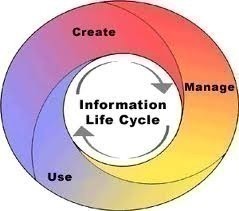Information Lifecycle Management (ILM)
Information Lifecycle Management (ILM) is a process for maintaining information storage at the least possible cost, while concurrently maintaining appropriate levels of availability.
The first phase in the Information Lifecycle Management process is to determine what information is being stored and how it is being accessed. The two steps in this phase are the Data Classification Audit and the Information Usage Audit.
The first phase of the Information Lifecycle Management process should deliver a clear picture of the information storage requirements of the organization. The second phase of the Information Lifecycle Management process is to align those requirements with available storage options.
Storage options include primary storage solutions such as SANs (Storage Area Networks), NAS (Network Attached Storage), and DASD (Direct Access Storage Device). The second class of storage options includes online backup solutions such as on-line magnetic tape and DVD libraries. The third class of storage solutions consists of magnetic and optical storage which is stored off-line, and possibly off-site.
Information Lifecycle Management is a business analysis of the trade-offs between cost and availability. The primary storage solutions are the most expensive per megabyte, but they also offer the greatest availability. Information Lifecycle Management is a process whereby the business determines how to be invest its information storage budget.
Information Lifecycle Management (ILM) is presented here courtesy of The Enterprise Storage Management FAQ.


Comments - No Responses to “Information Lifecycle Management (ILM)”
Sorry but comments are closed at this time.